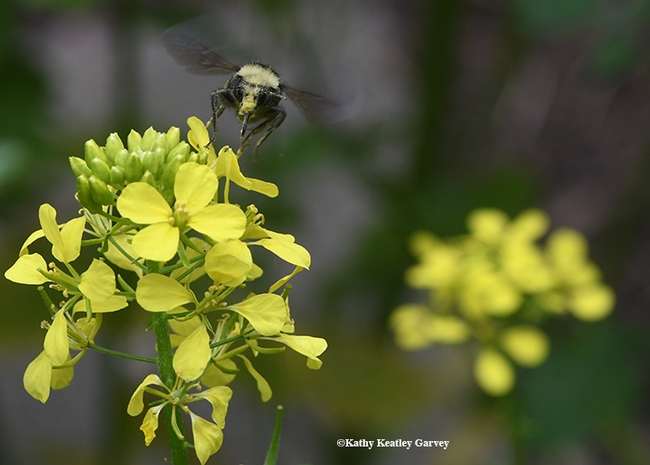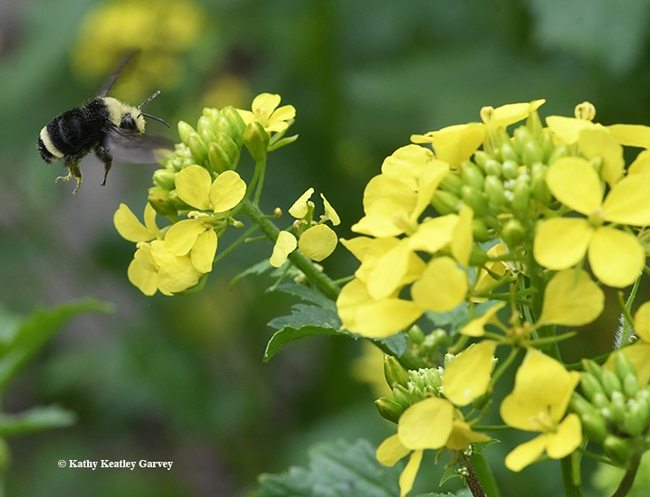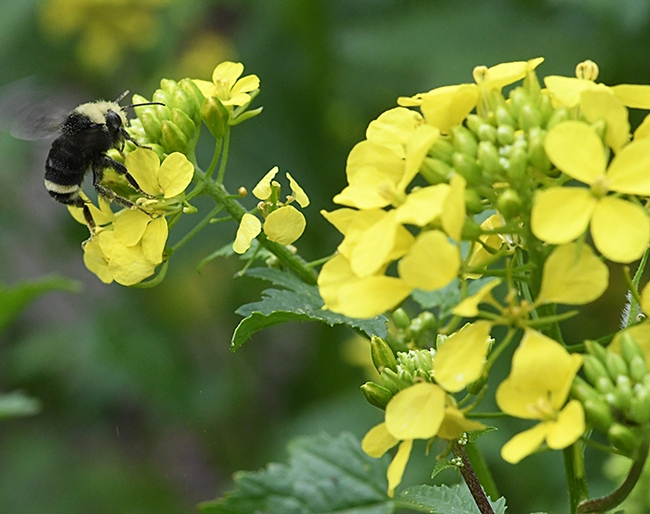What's better than a yellow-faced bumble bee (Bombus vosnesenskii) on yellow mustard?
Not much. Both are signs of early spring.
Mustard is popping up all over, along with oxalyis and wild radish. The earth is warming. Spring is here. Get ready.
In the University of California book, California Bees and Blooms: Guide for Gardeners and Naturalists, the authors write that B. vosnesenskii and B. melanopygus "are considered spring bees because that is when their population is highest, tailing off in numbers the rest of the year."
The book is the work of Gordon Frankie, UC Berkeley entomology professor; Robbin Thorp, distinguished emeritus professor of entomology at UC Davis; photographer and entomologist Rollin Coville (he received his doctorate from UC Berkeley), and botanist Barbara Ertter, also affiliated with UC Berkeley.
Be sure to check out their companion pocket guide on the UC ANR website. It's titled Common Bees in California Gardens. It will help you identify 24 of the most common bees found in urban gardens and landscapes. That's 24 out of nearly 1600 species of native bees found in the Golden State.
Yellow-faced bumble bee, yellow mustard, Golden State....Life is good...
Attached Images:

A pollen-laded yellow-faced bumble bee, Bombus vosnesenskii, buzzes toward a mustard blossom. (Photo by Kathy Keatley Garvey)

Coming in for a landing! A yellow-faced bumble bee, Bombus vosnesenskii, lands on a mustard blossom. (Photo by Kathy Keatley Garvey)

It doesn't get any better than this. Yellow-faced bumble bee (Bombus vosnesenskii) lands on a mustard blossom. (Photo by Kathy Keatley Garvey)